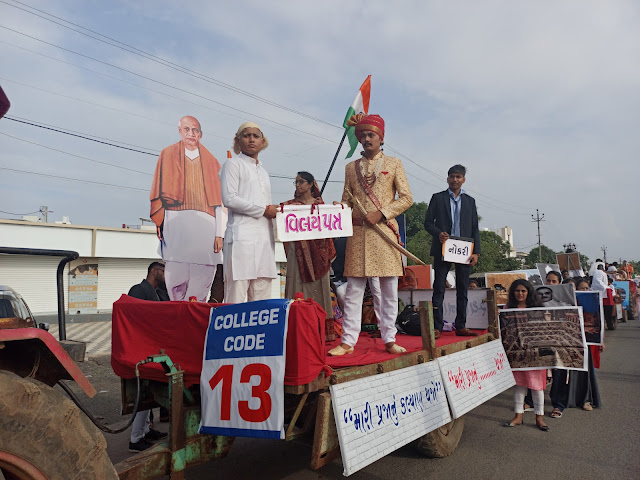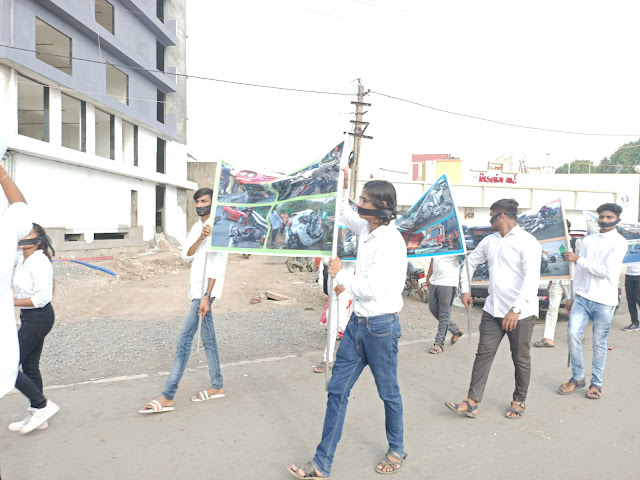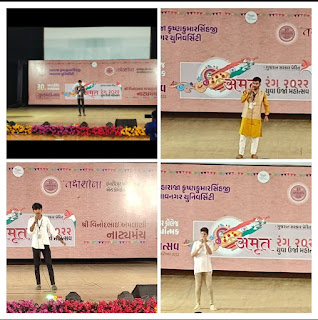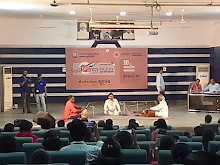This Blog-post is a response to the thinking activity task on The Culture of Speed and the counter-culture of Slow Movementgiven by our professor Dr.Dilip Barad Sir. To know about the task, CLICK HERE.
“Don’t live life as if you’re afraid of being late to your own funeral” - Geir Berthelsen, Founder of 'The world Institute of slowness'
The slow movement (sometimes capitalized Slow movement)advocates a cultural shift toward slowing down life's pace. It began with Carlo Petrini's protest against the opening of a McDonald's restaurant in Piazza di Spagna, Rome in 1986 which sparked the creation of the slow food movement. Over time, this developed into a subculture in other areas, like the Cittaslow organization for "slow cities". The "slow" epithet has subsequently been applied to a variety of activities and aspects of culture. (Read more on Wikipedia Page)
Slow Philosophy and Slow Movement:
Basically, Philosophy is the discipline that gives light on your life to find meaning. Slow philosophy is what exactly gives the meaning within the speed, respectively. It is not about becoming slow against your speedy life, It's about seeking to do everything at the right speed. This is a thought that can be taken very seriously to explore yourself and the world. It can be a source of comfort and guidance in difficult times. It is a lifelong journey that should be embraced and enjoyed.
"A slow movement is a form of exercise that is done slowly and with great focus. This type of exercise is great for people who are new to working out or for people who are recovering from an injury. Slow movement helps to improve flexibility, strength, and balance".
As Gandhi said: "there is more to life than to increase its speed"
...and yet life seems to be getting faster and faster. (The World Institute of Slowness)
In Carl Honoré's 2004 book, In Praise of Slow, he describes the slow movement thus:
Carl Honoré (born 29 December 1967 in Scotland) is a Canadian journalist who wrote the internationally best-selling book In Praise of Slow (2004) about the Slow Movement.
In Praise of Slow (U.S. title In Praise of Slowness: Challenging the Cult of Speed) is a book by Carl Honoré containing his analysis of the "Cult of Speed", which he claims is becoming the societal standard all over the world. He discusses and gives praise to the Slow Movement and the various groups around the world representative of this movement.
The speaker talks about time and speed by marking his own life events. Slowness is very important nowadays, especially in the West because as the speaker said that in the West, time goes in a linear way while in other countries time goes in a cyclical way. Our life becomes slow and speeds through Time only. Slowing down in life and work become beneficial or not can be the quest and the concern to apply practically. What can we say that time consumes life or speed? Speed is the sense that humans nowadays go faster to achieve more and more things and for living a future good life. But is it practically not true that this race of humans in the level of speed becomes the result of your qualitative life?

Paul Virilio's work on 'Dromology' - the Science of Speed - is an exciting reading of late twentieth-century cyberculture.
Dromology is derived from the Greek ‘dromos’: avenue or race course. The theory of dromology interprets the world and reality as a resultant of velocity. In Paul Virilio’s 1977 essay entitled “Speed and Politics”, the french philosopher makes a compelling case for an interpretation of history, politics and society in the context of speed. Extending the definition of “dromomaniacs”, Virilio argues that speed became the sole agent and measure of progress. He contends, that “there was no ‘industrial revolution’, only ‘dromocratic revolution’; there is no democracy, only dromocracy; there is no strategy, only dromology.”
































































